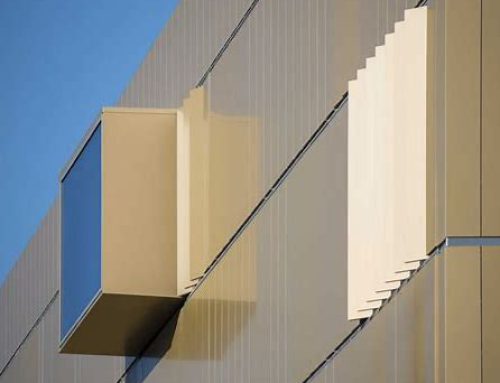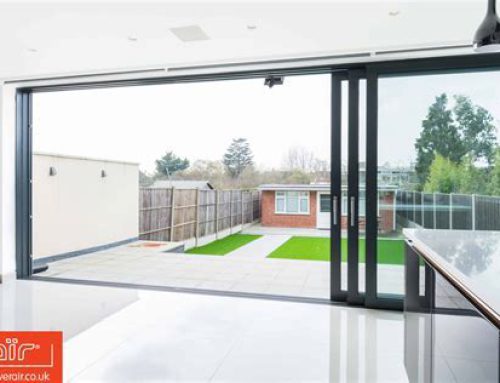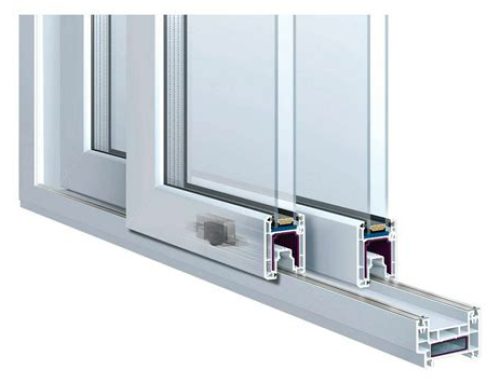Skylight fixed and movable glass roof

In architectural design, the integration of natural light has always been a hallmark of creating inviting and functional spaces. Skylights and movable glass roofs represent two innovative approaches to achieving this goal, each offering unique benefits and considerations.
Skylights: Illuminating Spaces from Above
Skylights are windows installed in a roof or ceiling, allowing natural light to penetrate directly into interior spaces. They come in various shapes and sizes, from small rectangular openings to expansive domes, offering architects and homeowners flexibility in design and functionality.
Advantages of Skylights:
- Natural Light Enhancement: Skylights maximize the amount of daylight entering a room, reducing the need for artificial lighting during the day and creating a more pleasant indoor environment.
- Visual Appeal: They add a distinctive architectural feature, enhancing the aesthetic appeal of both modern and traditional buildings.
- Ventilation Options: Some skylights can be opened to allow for natural ventilation, improving air circulation and indoor air quality.
- Space Optimization: Especially in smaller rooms or areas where wall windows aren’t practical, skylights can significantly increase the feeling of openness and spaciousness.
Considerations for Skylights:
- Heat Gain: Depending on orientation and glazing, skylights can contribute to heat gain in summer, necessitating thoughtful placement and use of shading devices.
- Condensation: Proper installation and maintenance are crucial to prevent issues like condensation or leaks, which can affect both the skylight’s functionality and the building’s integrity.
- Energy Efficiency: While skylights reduce the need for artificial lighting, they must be properly insulated and equipped with energy-efficient glazing to minimize heat loss during colder months.
Movable Glass Roofs: Flexible Design Solutions
Movable glass roofs, also known as retractable or operable roofs, offer an alternative approach to controlling natural light and ventilation in both residential and commercial settings. These roofs can be fully opened or closed, providing unparalleled versatility in room functionality and climate control.
Advantages of Movable Glass Roofs:
- Adaptive Environment: They allow spaces to seamlessly transition between indoor and outdoor environments, enhancing usability and connection with nature.
- Natural Ventilation: When open, movable glass roofs promote natural airflow, reducing reliance on mechanical ventilation systems and improving comfort.
- Seasonal Adaptability: Closed during inclement weather and open on pleasant days, movable glass roofs enable year-round enjoyment of outdoor spaces.
- Design Flexibility: Architects can integrate movable glass roofs into various architectural styles, from minimalist modern designs to historic renovations.
Considerations for Movable Glass Roofs:
- Maintenance: Mechanisms for opening and closing roofs require regular maintenance to ensure smooth operation and longevity.
- Cost: Installation and operational costs can be higher than traditional fixed roofs due to the complexity of the systems and materials used.
- Structural Requirements: Proper structural support is essential to accommodate the weight and movement of the glass roof panels safely.
Future Trends and Innovations
As technology continues to evolve, the future of skylights and movable glass roofs looks promising with several trends and innovations on the horizon.
Smart Skylights and Roofs: The integration of smart technology into skylights and movable glass roofs is revolutionizing their functionality. Features such as automated opening and closing based on weather conditions, solar intensity, and indoor air quality are becoming more common. Smart glass, which can change its tint in response to sunlight, further enhances energy efficiency and user comfort.
Energy Efficiency: Advances in glazing technology are improving the thermal performance of skylights and movable glass roofs. Low-emissivity (Low-E) coatings, triple glazing, and vacuum-insulated glass are just a few innovations that help reduce heat loss in winter and minimize heat gain in summer. Additionally, the use of solar panels integrated into glass roofs can generate renewable energy, contributing to the building’s sustainability goals.
Sustainable Materials: The push towards sustainability is leading to the use of more eco-friendly materials in the construction of skylights and movable glass roofs. Recycled and recyclable materials, as well as those with a lower carbon footprint, are being increasingly adopted. This shift not only helps reduce the environmental impact of construction but also aligns with the growing demand for green building certifications.
Design Flexibility: The customization options for skylights and movable glass roofs are expanding. Architects and designers can now choose from a wide range of shapes, sizes, and finishes to match the specific aesthetic and functional needs of a project. This flexibility ensures that these features can be seamlessly integrated into any architectural style, from ultra-modern to traditional.
Case Studies and Real-World Applications
To illustrate the practical benefits and applications of skylights and movable glass roofs, let’s explore a few real-world examples:
Residential Applications: In modern homes, large skylights in living areas and kitchens create bright, open spaces that are both welcoming and energy-efficient. Movable glass roofs in patios or sunrooms provide a versatile space that can be enjoyed year-round, enhancing the home’s livability and connection to the outdoors.
Commercial Spaces: In commercial settings, such as office buildings and retail spaces, skylights and movable glass roofs contribute to a more pleasant and productive environment. Natural light has been shown to improve mood and productivity, making these features highly desirable in workplaces. Additionally, they can reduce energy costs by decreasing the need for artificial lighting.
Public Buildings: Museums, libraries, and other public buildings benefit from the aesthetic and functional advantages of skylights and movable glass roofs. These features create inviting spaces filled with natural light, enhancing the visitor experience while demonstrating a commitment to sustainable design.
Challenges and Considerations
While skylights and movable glass roofs offer numerous advantages, there are also challenges and considerations that architects and homeowners must address during design, installation, and maintenance phases.
Installation Complexity: Installing skylights and movable glass roofs requires careful planning and expertise. Proper structural support, weatherproofing, and integration with existing building systems are crucial to ensure safety and longevity. Depending on the size and complexity of the installation, professional assistance may be necessary to achieve optimal results.
Waterproofing and Insulation: Ensuring effective waterproofing and insulation is essential to prevent issues such as leaks, condensation, and heat loss. Improper sealing or insulation can lead to energy inefficiencies and potential damage to interior finishes over time. Regular inspections and maintenance are recommended to address any potential issues promptly.
Solar Heat Gain and Glare: Skylights and glass roofs can contribute to solar heat gain, especially in warmer climates or when improperly oriented. This can lead to increased cooling costs and discomfort for occupants. Employing shading devices such as blinds, shades, or exterior overhangs can help mitigate these effects while still allowing for natural light.
Maintenance Requirements: Both skylights and movable glass roofs require regular maintenance to ensure optimal performance and longevity. Cleaning glass surfaces, inspecting seals and mechanisms, and addressing any signs of wear or damage are essential tasks. Depending on the location and climate, maintenance intervals may vary, but proactive upkeep is key to preserving functionality and appearance.
Future Outlook and Adaptation
Looking ahead, advancements in technology and materials will continue to shape the evolution of skylights and movable glass roofs. Innovations such as self-cleaning glass coatings, improved energy efficiency through advanced glazing, and enhanced automation and integration with smart building systems are expected to further enhance their performance and usability.
Moreover, as sustainability becomes an increasingly important consideration in building design, skylights and glass roofs are likely to play a pivotal role. Their ability to maximize natural light, reduce reliance on artificial lighting, and enhance indoor environmental quality aligns with the goals of energy-efficient and green building practices.
Integration into Modern Architecture
Skylights and movable glass roofs have become integral components of modern architectural designs, enhancing both the aesthetics and functionality of buildings across various sectors. Their versatility allows architects to create spaces that are not only visually appealing but also energy-efficient and adaptable to different environmental conditions.
Architectural Aesthetics: Skylights and glass roofs serve as architectural focal points, adding a sense of openness and grandeur to interior spaces. They can be designed in various shapes and sizes, complementing the overall design language of a building while emphasizing natural light as a design element.
Spatial Flexibility: The ability to open or close movable glass roofs provides unprecedented flexibility in space utilization. Residential spaces can seamlessly transition between indoor and outdoor living areas, while commercial buildings can create dynamic environments that cater to different activities and events.
Enhanced User Experience: Natural light has been proven to positively impact human health and well-being by enhancing mood, productivity, and overall satisfaction. Skylights and glass roofs maximize daylight penetration, creating bright and inviting spaces that promote occupant comfort and satisfaction.
Cultural and Environmental Impacts
Beyond their architectural and functional benefits, skylights and movable glass roofs contribute to broader cultural and environmental impacts.
Cultural Significance: Throughout history, natural light has held cultural significance in architectural design, symbolizing enlightenment, spirituality, and connection to the natural world. Skylights and glass roofs continue this tradition by integrating natural elements into modern buildings, fostering a deeper appreciation for sustainability and the built environment.
Environmental Sustainability: By reducing the reliance on artificial lighting and mechanical ventilation, skylights and glass roofs help reduce energy consumption and lower carbon footprints. They support sustainable building practices by maximizing energy efficiency and improving indoor environmental quality, which are increasingly important considerations in architectural design and construction.
Conclusion
In conclusion, skylights and movable glass roofs represent significant advancements in architectural design, emphasizing the importance of natural light, ventilation, and spatial flexibility. Each option brings unique advantages to residential and commercial spaces, catering to diverse aesthetic preferences and functional requirements.
Skylights, with their ability to flood interiors with daylight and enhance visual appeal, are ideal for bringing light into rooms where traditional windows may not suffice. They offer opportunities for energy savings and can contribute to a healthier indoor environment through increased natural ventilation.
On the other hand, movable glass roofs provide unparalleled versatility, allowing spaces to adapt seamlessly to changing weather conditions and user preferences. They blur the boundary between indoor and outdoor spaces, fostering a connection with nature while offering the convenience of climate control.
Both skylights and movable glass roofs require careful consideration during the design and implementation phases to ensure optimal performance and longevity. Factors such as orientation, glazing options, insulation, and structural support play crucial roles in maximizing their benefits while mitigating potential drawbacks.
Looking ahead, the integration of advanced technologies, such as smart sensors and energy-efficient materials, promises to further enhance the functionality and sustainability of skylights and movable glass roofs. These innovations will continue to shape architectural trends, offering solutions that prioritize both environmental responsibility and human well-being.
In essence, whether you are designing a modern residence, renovating a historic building, or planning a commercial space, skylights and movable glass roofs remain indispensable tools for harnessing natural light and creating inviting, adaptable environments. Their transformative impact on architectural aesthetics and functionality underscores their enduring relevance in contemporary building practices.
As architects and homeowners alike embrace the benefits of these innovative solutions, the future of building design looks brighter and more connected than ever before. With skylights and movable glass roofs, the journey towards sustainable, light-filled spaces continues to evolve, guided by a commitment to enhancing quality of life and environmental stewardship, Skylight fixed and movable glass roof , Skylight fixed and movable glass roof , Skylight fixed and movable glass roof.





Leave A Comment